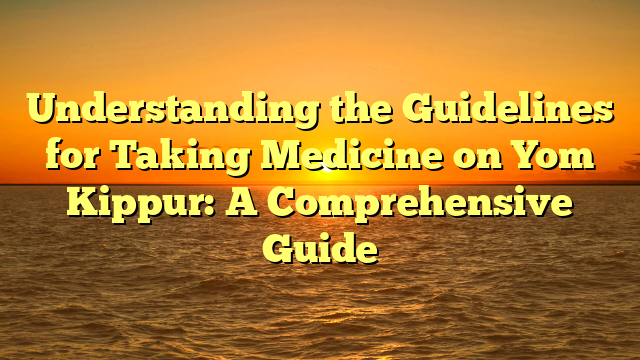Understanding Dosage: What Does 10 ml of Medicine Mean for You?
Introduction
When it comes to taking medication, understanding the dosage is crucial for your health and well-being. One common measurement you may come across is 10 ml of medicine. But what does this actually mean? In this article, we will explore the significance of 10 ml of medicine and how it affects your treatment.
What is a Dosage?
Before we delve into the specifics of 10 ml of medicine, let’s first understand what a dosage is. A dosage refers to the amount of medication prescribed by a healthcare professional to be taken at a given time. It is typically measured in milliliters (ml) or other units such as teaspoons or tablets.
The Importance of Accurate Dosage
Accurate dosage is crucial for several reasons:
- Effectiveness: Taking the correct dosage ensures that the medication works as intended and provides the desired therapeutic effect.
- Safety: Taking too little medication may result in inadequate treatment, while taking too much can lead to harmful side effects or toxicity.
- Consistency: Following the prescribed dosage schedule helps maintain a consistent level of medication in your body, optimizing its effectiveness.
Understanding 10 ml of Medicine
Now let’s focus on the specific dosage of 10 ml of medicine. When you see this measurement on your prescription or medication label, it means that you should take 10 milliliters of the medication using a measuring device such as a syringe or a medicine cup.
Factors Affecting Dosage
It’s important to note that the dosage of a medication can vary depending on several factors:
- Age: Children and adults may require different dosages due to variations in metabolism and body weight.
- Weight: Some medications are prescribed based on body weight to ensure optimal effectiveness.
- Medical condition: Certain medical conditions may require higher or lower dosages to achieve the desired therapeutic effect.
- Other medications: Some medications can interact with each other, affecting the dosage requirements.
Measuring 10 ml of Medicine
To accurately measure 10 ml of medicine, follow these steps:
- Use a measuring device specifically designed for medication, such as a syringe or a medicine cup.
- Shake the medication bottle well before pouring it into the measuring device.
- Pour the medication slowly into the measuring device, ensuring that the liquid reaches the 10 ml mark.
- If using a syringe, gently push the plunger until the liquid reaches the 10 ml mark.
- Double-check the measurement to ensure accuracy.
Common Medications with 10 ml Dosage
Several medications may be prescribed with a dosage of 10 ml. Here are a few examples:
| Medication | Indication |
|---|---|
| Amoxicillin | Antibiotic used to treat bacterial infections |
| Acetaminophen | Pain reliever and fever reducer |
| Cough syrup | Relieves cough symptoms |
Conclusion
Understanding the dosage of your medication is essential for proper treatment. When you come across the measurement of 10 ml of medicine, remember to follow the instructions provided by your healthcare professional and use a measuring device to ensure accuracy. If you have any questions or concerns about your dosage, consult your healthcare provider for clarification. By taking the correct dosage, you can maximize the effectiveness of your medication and promote your overall well-being.










